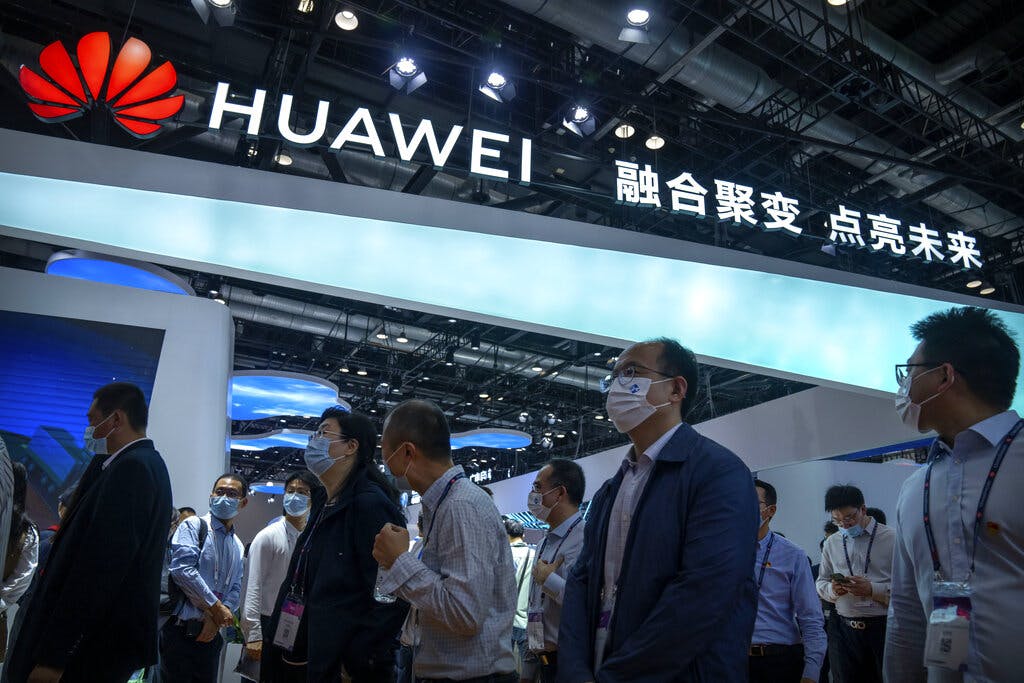How Washington Can Fend Off the Cyber-Threats of the Future
Thanks to the increased scale, scope, and frequency of cyber-enabled attacks across the American economic landscape, we now see the risks associated with cyber-enabled economic warfare more clearly.

The terrorist attacks of 9/11 taught America that even the most technologically unsophisticated actors could physically threaten the homeland. But as little as 15 years ago, the idea that a technologically backward nation could harm the American economy seemed ridiculous.
That is, until 2012. American banks got a serious wake-up call when Iran launched relentless, systemic, and widespread cyberattacks on the American financial system. Tehran’s hackers also destroyed Saudi Aramco’s computers in 2012. The following year, North Korean actors shut down banks and media companies across Seoul.
Wealthier adversaries like Russia and China demonstrated they could do far greater damage. Israeli intelligence revealed how the Kremlin was exploiting Russian anti-virus company Kaspersky’s global market penetration to secure backdoors into American and European networks. China spent a decade compromising American and foreign technology companies and IT service providers to exfiltrate intellectual property and data from hundreds of firms around the world.
As the Trump Administration’s 2017 National Security Strategy put it, America’s adversaries use cyber-enabled economic warfare to “weaken our businesses and our economy.” Thanks to the increased scale, scope, and frequency of cyber-enabled attacks across the American economic landscape, we now see the risks associated with cyber-enabled economic warfare more clearly.
Today, Russia, China, North Korea, and Iran are engaged in persistent campaigns to undermine the economic security and strength of America and its allies. These adversaries recognize that our strength comes from our innovative economy, and that our unmatched military strength grows out of that innovation base — and are attacking us accordingly.
These four adversaries have different capabilities and objectives, so they wage different kinds of cyber campaigns against us.
Russian hackers penetrate deep into software supply chains and position themselves to put choke holds on critical economic infrastructure. North Korea is stockpiling cryptocurrencies to become resilient against American financial sanctions.
China plants equipment throughout the global communications infrastructure and leverages that equipment to gather, manipulate, and control vast amounts of data — and Iran exploits known vulnerabilities to attack unpatched networks here and abroad.
Despite growing clarity about the threats we face, the federal government has a blind spot that leaves the United States vulnerable to a catastrophic surprise in the future.
Our problem is that our response remains reactive, not proactive. Washington needs to understand not only what adversaries are doing today but also what they are planning next so the American government can disrupt those plans.
It is not enough to punish the perpetrators of cyberattacks and the regimes that direct them. It is not even enough to disrupt attacks and disarm attackers as they cock their cyber guns.
To be sure, reactive measures are necessary to reverse the damage already done. Both the Trump and Biden administrations have been successful in their campaign to convince partners and allies to reject equipment by Huawei, the Chinese tech giant.
However, it is costly and slow to rip and replace existing technology at home and abroad. Better not to allow American enemies to gain this upper hand in the first place.
Washington should keep an eye on Huawei, yes, but it is the threat of today or maybe even yesterday. China will quickly rebrand and reconstitute new affiliates and new national champions to continue its pursuit of global information dominance. Instead, the American government should work to thwart its adversaries’ campaigns in the cradle.
Luckily, there is a canary in the coal mine. Before adversaries attack the United States, the strongest country in the world, they often perfect their cyber-enabled economic warfare tools against their regional foes.
North Korea’s attacks on South Korea, Iran’s attacks on Saudi Arabia and Israel, China’s attacks on India, and Russia’s attacks on Ukraine offer insight into how and when these countries will deploy cyber-enabled economic warfare attacks against the American homeland.
The United States should work with its partners around the world to gather and dissect the data to predict where the adversary might strike next.
Now more than ever, with American lives dependent upon a network that moves at the pace of data, the United States must live by the credo, “To be forewarned is to be forearmed.”
Annie Fixler, who co-authored this piece, is deputy director of the Center on Cyber and Technology Innovation at the Foundation for Defense of Democracies. Ms. Ravich and Ms. Fixler are the editors of a newly released monograph on cyber-enabled economic warfare as waged by Russia, China, North Korea, and Iran. FDD is a Washington, DC-based, nonpartisan research institute focusing on national security and foreign policy.

